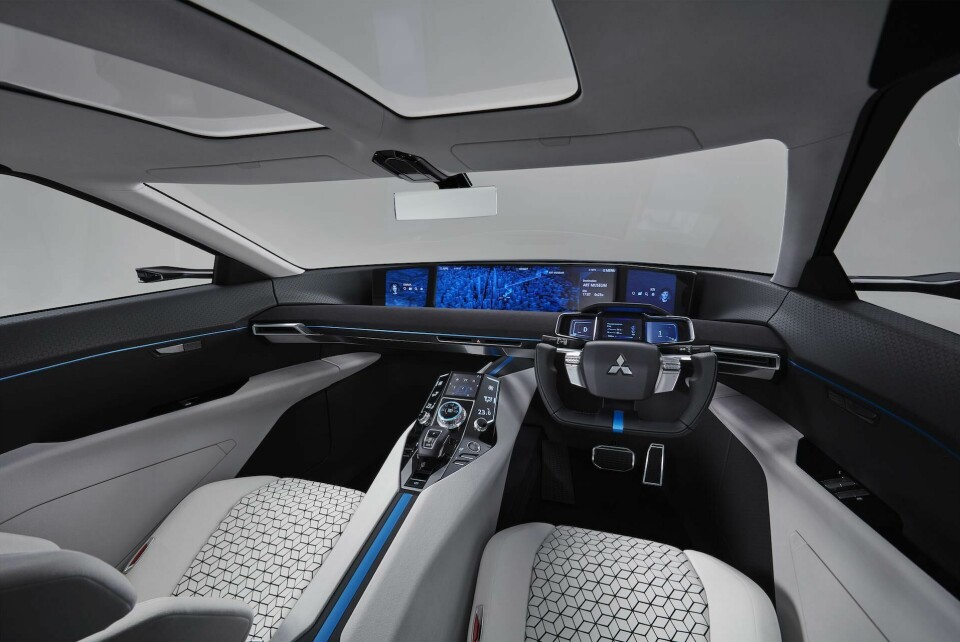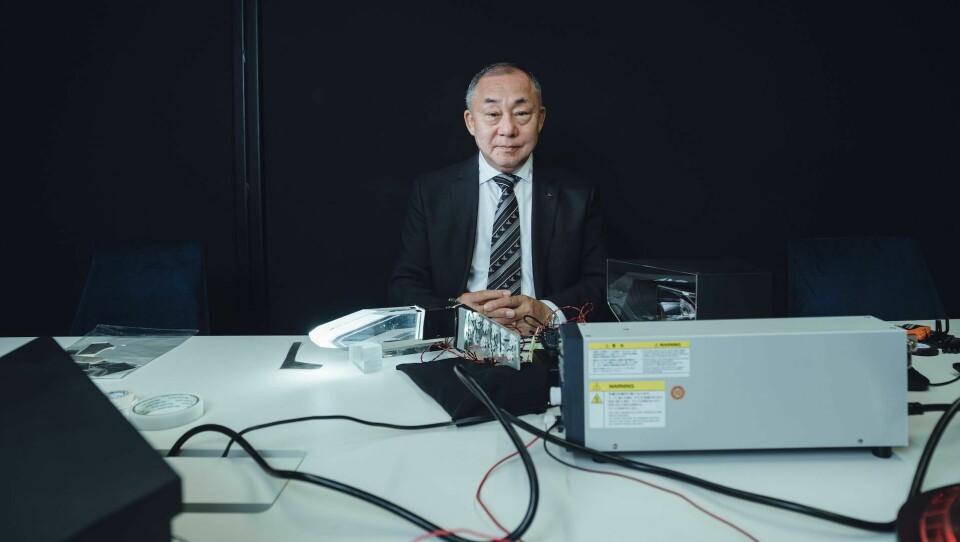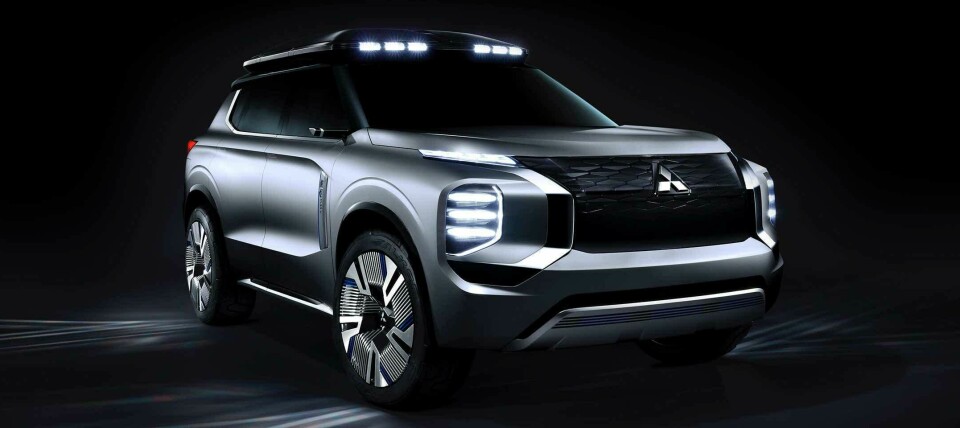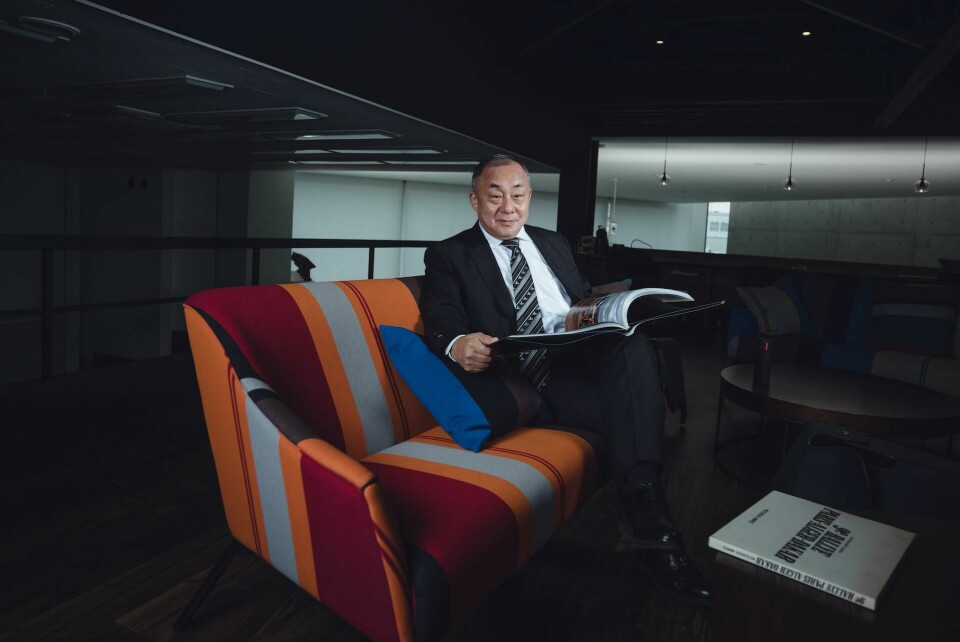
Design Interview: Tsunehiro Kunimoto, Mitsubishi
“I have conducted interviews with real customers in Asia, Europe, Japan and the USA. They told me that ‘honest’, ‘robust’ and ‘reliable’ are key markers of the brand. I want to express this through design.”

When I was a kid, my father spent a lot of time overseas and he brought back many interesting industrial items from Europe. These were beautifully designed, and very different from Japanese design at the time. I think I became excited about design then because of these objects, which were designed for very functional usage: this was what sparked my interest. Then, while at university, I bought a car. I loved modifying and driving that car; driving was like having a private room, I could go anywhere, and many of my best experiences come from cars. During that period the oil crisis was happening, and not many students were interested in going into automotive – but I believed the car would survive.
Mitsubishi has a long history in automotive; it is an old company, and its design and engineering root began with aeroplane and ship building. As part of my orientation at Mitsubishi Motors, I visited the factories and shipyards of Mitsubishi Heavy Industries. The focus on large-scale engineering and manufacturing is a big part of the company’s DNA, and we are proud of it.
Our strength is reliability. Many customers say Mitsubishi products are very tough and robust – in the suspension, body and engine. I have conducted interviews with real customers in Asia, Europe, Japan and the USA. They told me that ‘honest’, ‘robust’ and ‘reliable’ are key markers of the brand. I want to express this through design. I studied industrial design and my personal philosophy is very close to Bauhaus: functionality and beauty.
Our new ‘robust and ingenious’ design philosophy and direction creates a cohesive brand identity, and one way this is expressed is through the front face of our vehicles. The new fascia is called ‘dynamic shield’, and it features a shield motif framed by a powerful central darker area. The side area focuses on protection and for the interior, we are focusing on the horizontal axis through the instrument panel layout. This form allows the driver to focus on the journey and the adventure, and gives occupants a wider and more spacious view.
We showed the GT-PHEV in Paris (2016) and in Geneva (2018) the e-Evolution, concepts that express my future design vision. The e-Evolution is very solid, but with agile performance communicated through its design. It is an evolution of our historical high-performance cars like the Lancer Evolution, lightweight, robust, but clearly a dynamic form which expresses its performance capability.
The GT-PHEV builds on the robust and capable heritage of our authentic SUVs like the Pajero. The stance of the GT-PHEV concept was perfected to show its roots, but also how Mitsubishi vehicles are evolving. It has functional beauty, but with details like the sloping roofline and wide wheelarches, and a interior trim that alludes to a grand tourer. Furthermore, at the 2019 Geneva motor show, we announced the Engelberg Tourer concept car as an updated version of the GT-PHEV, again expressing clearly our design philosophy.
We are taking the best elements of the Mitsubishi design heritage and creating future vehicles, without losing sight of our traditional strengths.

I joined Mitsubishi in 2014 from Nissan. After I graduated from school, I stayed with Nissan for nearly four decades! There, I was involved in projects like the 300Z, 350Z, R32 Skyline, Murano and Qashqai, as well as the Infiniti G-series sedan and FX45; the Nissan Juke was the final project I directly managed. There, I developed the design strategy and model range for the distinct Nissan and Infiniti brands. This experience prepared me well to consider and define what makes a Mitsubishi, and to develop a new design strategy for the company based on our history, heritage and innovation.
My overseas experience at Nissan was also really valuable, as I was assigned to work in San Diego, a very international studio. Since I joined Mitsubishi, we have re-opened the European studio in Frankfurt. The team in Germany works together with the design centre in Okazaki. We have found many strong designers in Europe, and they bring an interesting viewpoint; I want to hire many designers from all over the world because the company is growing fast – we have big plans. One of these is to open the new studio in the centre of Tokyo. We will have a global team here to collaborate with the other studios, as well as at the Frankfurt studio.

There are two types of designers, one the very pure creatives – sometimes the crazy guys! The second type is designers who are creative, but with a precise quality of design: beautiful lines, beautiful structures. These two types are the designers I am interested in.
I think designers have the opportunity to change the world. Look at what Apple has done with the iPhone – they have created a new world. In China, for example, everything is done by phone, cashless and connected; the phone covers long distances, connecting people and places. If you think about it, in less than 10 years, the world has been changed by the iPhone. Automotive designers need to learn from this, we need to consider how we could be designing in this new world.
When I was a young designer, I saw new technology coming through, and the oil crisis forced us to invent smaller, more fuel-efficient vehicles. Mitsubishi pretty much invented the kei car with the Colt. Now, with EVs, we don’t need a regular engine so we can create a new way; however, for many reasons – safety, weight balance – the packaging remains roughly the same. But if we are moving towards autonomous driving, maybe the car can really change; it is no longer necessary for it to look like a car.
I don’t know what the future holds, or if it will be a car-sharing world. But customers still want to have their own personal space. When I joined the automotive business, it was called ‘the oil shop’. I was taught that the future was about city commuting. We were told not to expect too many cars, that public transportation would rule, but instead, automotive companies produced exceptional compact cars to save energy – nobody wanted to lose private cars. That stays with me. With another generation of change coming, an important question is: are people ready to hand over safety to an AI machine? It is like a sci-fi movie. I think autonomous driving is one of the most important changes we face as designers.














